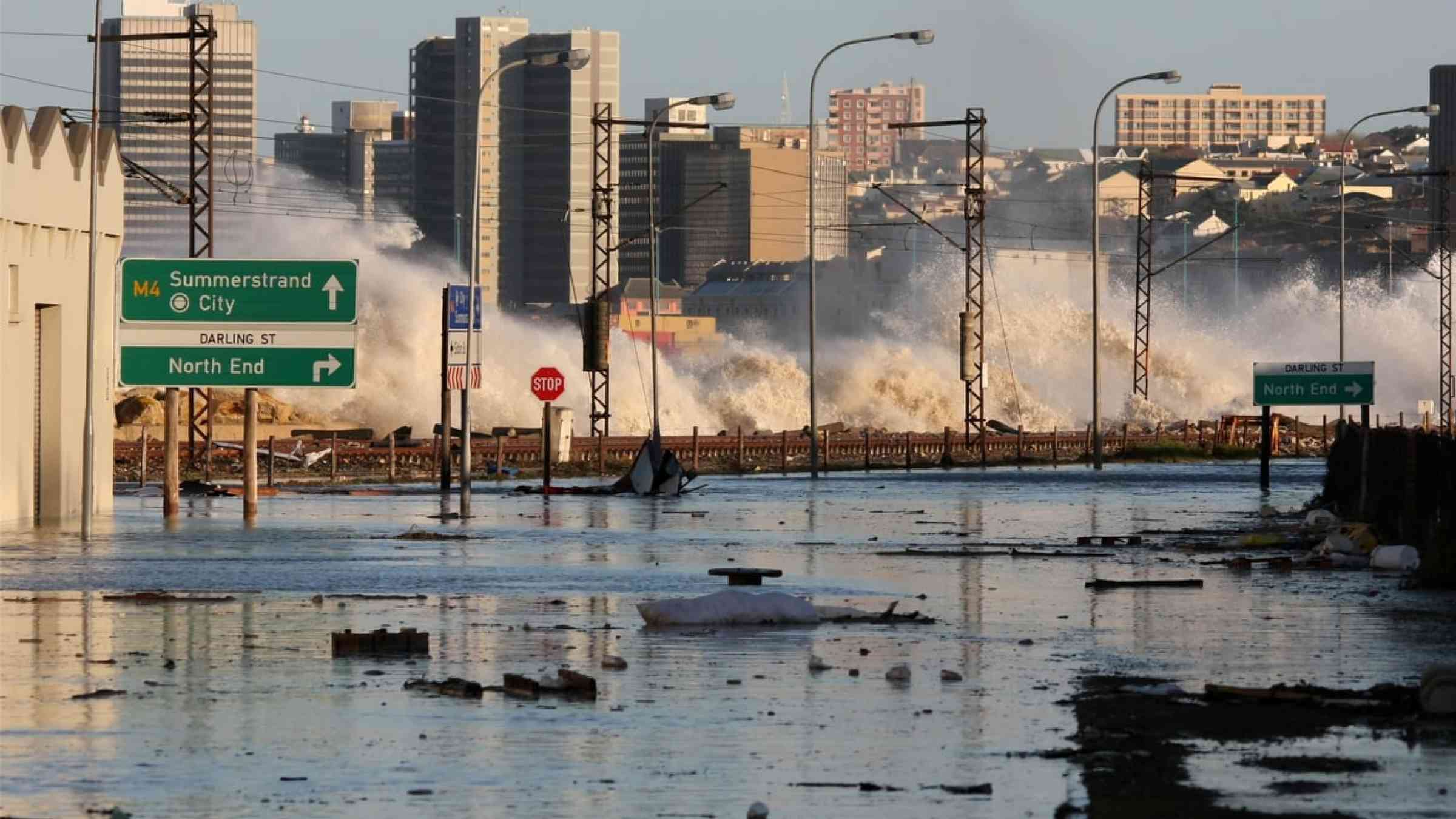What happens when an earthquake hits a building already damaged by coastal flooding?

Salt corrodes buildings. Earthquakes shake them. What happens when an earthquake hits a building already damaged by saltwater?
To answer that question, the National Science Foundation awarded a UB-led research team $2 million over five years to assess such risks in Hawai’i and other regions with low-lying, coastal infrastructure.
“A lot of research has been done on seismicity and salt corrosion separately,” says project principal investigator Pinar Okumus, associate professor in the Department of Civil, Structural and Environmental Engineering. “But very little has been done on how earthquakes affect buildings already damaged by saltwater.”
Other UB co-principal investigators are Negar Elhami-Khorasani and Ravi Ranade, both associate professors in the Department of Civil, Structural and Environmental Engineering.
Additional co-principal investigators include Oceana Francis, professor in the Department of Civil, Environmental and Construction Engineering at the University of Hawai'i at Mānoa, and Rebekah Paci-Green, associate professor and chair of the Department of Environmental Studies at Western Washington University.
Pinar Okumus, associate professor, Department of Civil, Structural and Environmental Engineering
Applying discoveries to Hawai'i
The project will involve the use of “test beds,” which are a way to apply the research findings to a site to demonstrate the potential impact on that site. The site can be a real place or a virtual city that can be modified to represent features specific to selected areas.
The project’s first phase will examine the physical characteristics of hazards and infrastructure: flood depth, frequency and duration; buildings of different types including steel and concrete structures; buildings with different levels of corrosion; and the severity of seismic activity.
Researchers will develop structural models of different building types and different levels of corrosion caused by salt, not just from seawater but also from the salt in the atmosphere near oceans.
Hilo, a low-lying coastal city on the island of Hawai'i with a population of about 45,000, will be one of the test beds. A 5.0 magnitude earthquake occurred nearby in 2022.
“They face both hazards,” says Okumus, “and they have already documented the salt corrosion on the roads.”
The age of the structure matters, not just because age-related deterioration affects how well a building can withstand seismic activity, but also because building codes have changed over time. The data will include building height and type of structural systems as well.
Once the data is collected and research results are ready to be shared with the community, social scientists will engage stakeholders, including emergency planners and policymakers in Hilo, as well as residents and business owners. The researchers will suggest effective mitigation options.
“It might be as simple and inexpensive as painting a steel column, or more complicated, like adding new structural material,” Okumus explains. “We want to work with local engineering firms. We even hope to work with the historical society; it has the records of these buildings.”
Outreach to local communities
The second test bed will be virtual, based on a model developed by the National Institute of Standards and Technology. “This means that our findings can be useful to people in any city,” says Okumus, including those in the Pacific Northwest, Puerto Rico and elsewhere.
She noted that the findings do not matter if people choose not to take action.
“People may not see this as a big risk,” she says. “They may have bigger problems, or more immediate concerns. Part of our research looks at risk perception and social vulnerability.”
In addition to PhD students, postdoctoral researchers and master’s students, the team also includes an independent consultant who is an emergency manager with expertise in outreach and hazard communication. “We want to be able to communicate effectively with people who are affected by the hazards,” Okumus says.
She expects to do joint research publications with the collaborators throughout the project.
“We want to make sure our results are not going to sit on a shelf,” she says. “I do expect challenges, but you can’t do exciting things without challenges.”